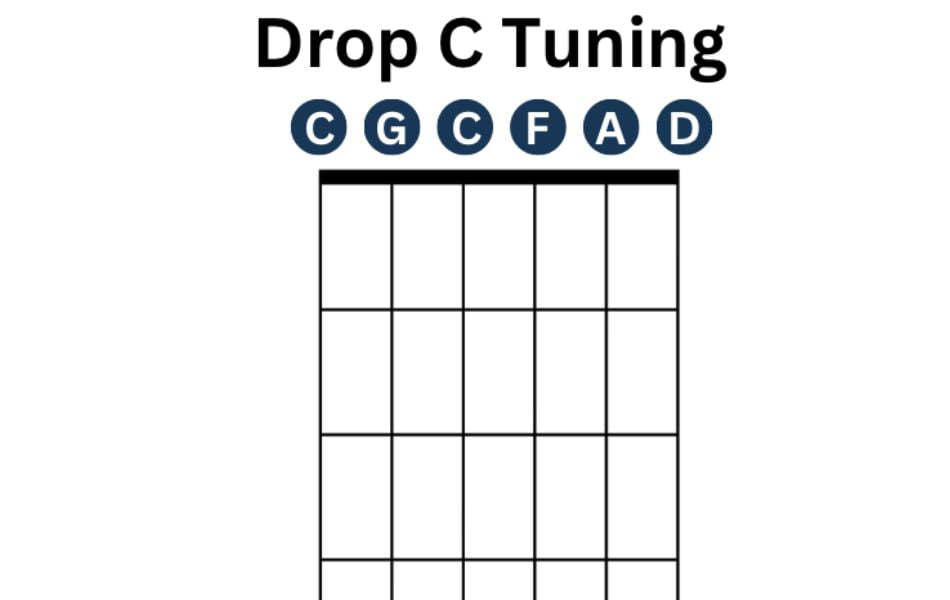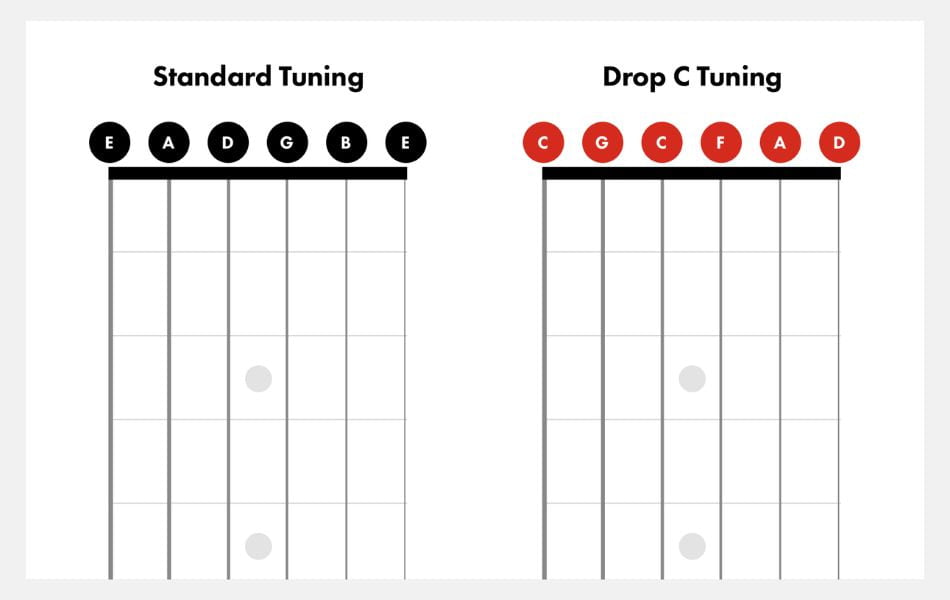Advanced Drop C Standard Tuning: Techniques and Concept
Besides standard tuning guitar, drop c standard tuning is the best choice for guitarists to make a beautiful sound. This is a new concept that enhances your musical ability and your creativity. So, let's dive into and explore the concept and technique of drop c.
What is drop c standard tuning?
Drop C standard tuning is a method of adjusting the strings of a guitar to produce a different sound compared to standard tuning. In standard tuning, the lowest string (6th string) of the guitar is usually tuned to the note E. However, in this tuning, the string is lowered by two whole steps to achieve the note C.
In drop C, the remaining guitar strings maintain their sound as in standard tuning. This means that you only alter the sound of the lowest string to achieve the C note, while the other strings retain their regular sounds.
Lowering the sound of the lowest string to the note C in Drop C enables the creation of a more profound and powerful sound, often used in heavy metal, hard rock, and genres with a strong character. Using Drop C tuning facilitates the production of power chords, intense riffs, and distinctive sound effects.

Drop c notes fretboard
When we talk about the "Drop C notes fretboard," we are discussing the process of tuning down the lowest string (usually the 6th string) of the guitar from note E to note C. This results in a series of different notes on the lowest string. To better comprehend this, imagine that the guitar string is a path, and each position on it corresponds to a different musical note.
In the "Drop C notes fretboard," the note C becomes the lowest note on the string, and the subsequent notes follow the standard order: C#, D, D#, E, F, F#, G, G#, A, A#, B, C. Each fret on the lowest string represents a distinct note, and adjusting the string to note C opens up opportunities for stronger and more unique melodies.
This difference in drop C standard tuning allows players to create chords, riffs, and melodies distinctive to genres like heavy metal and hard rock. This produces a more powerful and resonant sound and the ability to produce unique sound effects. Armed with an understanding of the drop C notes, players can harness their creative potential to craft music with a distinct sound from the guitar.
Contrasting standard tuning with drop C standard tuning
Standard tuning is the most common tuning for guitars and many other stringed instruments. In standard tuning, the strings are usually tuned to the pitches E, A, D, G, B, and E, starting from the lowest (thickest) string to the highest (thinnest) string. This tuning allows for a wide range of chord shapes and scales, making it versatile for playing various styles of music.
Drop C standard tuning is a variation of standard tuning where only the lowest string, typically tuned to E, is lowered to the note C. The rest of the strings remain in standard tuning. The resulting tuning for drop C standard is C, G, C, F, A, D, from the lowest string to the highest string. This alteration of just one string has a significant impact on the overall sound and playability of the guitar.

Key Differences and Implications
Lowered Bass Note: This alteration provides a sustained and deeper sound, which is particularly favored in genres like heavy metal and hard rock.
Power Chords: Drop C tuning is particularly well-suited for power chords. The lowered bass note gives power chords a more robust and intense quality.
Finger Strength and Techniques: Playing in drop C tuning requires adapting to the new string tension and finger positions. Techniques like bending, sliding, and hammer-ons/pull-offs will have a slightly different feel due to the altered tension.
Chord Shapes: While some standard chord shapes can still be used in drop C, others may need to be adjusted due to the altered bass note.
In conclusion, advanced drop C standard tuning is a paradigm shift that expands the horizons of guitar playing. It is a dynamic fusion of technical finesse and imaginative brilliance that engenders a musical experience both captivating and awe-inspiring.








